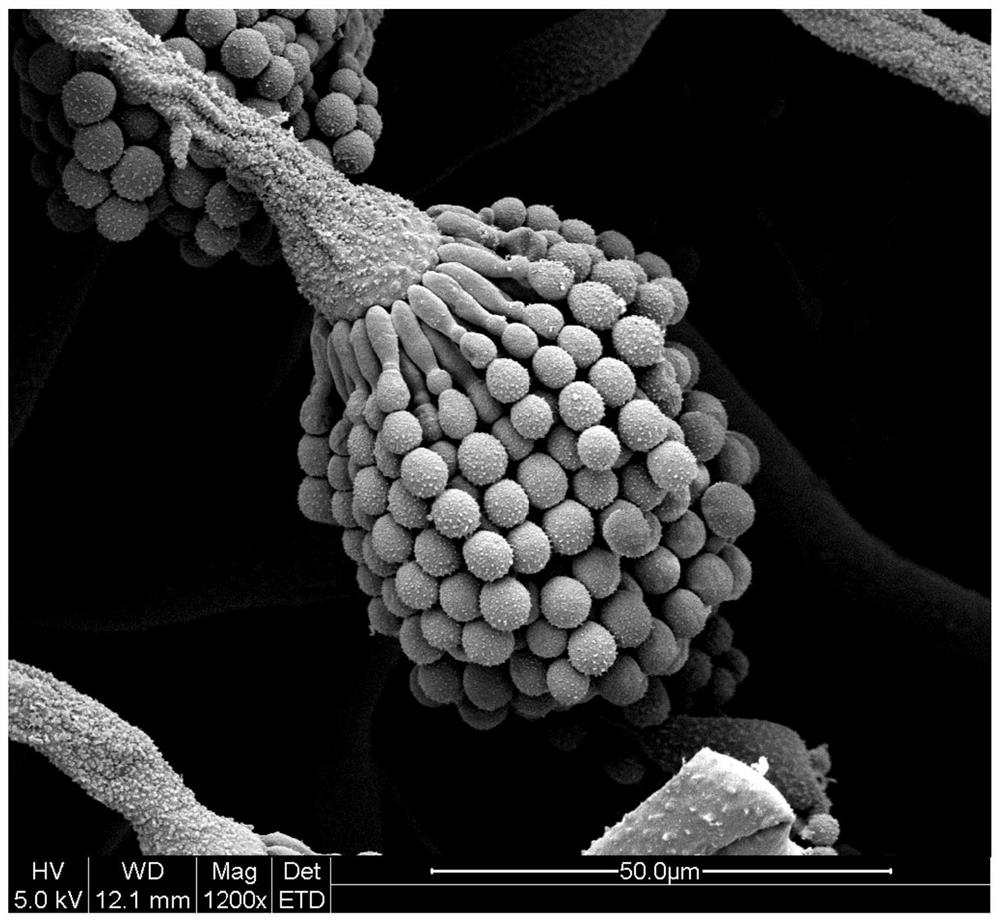High-quality aspergillus oryzae combined fungicide and application thereof in preparation of Pixian thick broad-bean sauce
A technology of Aspergillus oryzae and bean paste, applied in the field of microorganisms, can solve problems such as the abundance and enzyme activity to be improved, and achieve the improvement of raw material utilization rate and product quality, umami amino acid content and neutral protease activity. Effect
- Summary
- Abstract
- Description
- Claims
- Application Information
AI Technical Summary
Benefits of technology
Problems solved by technology
Method used
Image
Examples
preparation example Construction
[0030] ②Preparation of enzyme solution: Accurately weigh 3g of koji material and grind it thoroughly, adjust the volume to 100mL with distilled water, extract in a water bath at 40°C for 1 hour, and filter through 6 layers of gauze to obtain the enzyme solution to be tested.
[0031] ③ Sample determination:
[0032] a. Add 1.5 mL of Tris-HCl buffer solution with pH 8.0 to a 5 mL EP tube, and add 100 μL of appropriately diluted enzyme solution. Incubate at 40°C for 10 minutes to keep the temperature constant.
[0033] b. Add 100 μL of 26 mmol / L leucine-p-nitroaniline ethanol solution, mix quickly, and continue to bathe in water for 10 minutes. c. Immediately add 0.5mL 0.4mol / L trichloroacetic acid to terminate the reaction, and continue to keep it in a water bath for 5min. Absorbance was measured with a visible spectrophotometer at a wavelength of 405 nm. Parallel test 2 times.
[0034] d. Use the inactivated enzyme solution for the blank.
[0035] ④Calculation:
[0036] ...
Embodiment 1
[0044] Embodiment 1: Isolation and screening of Aspergillus oryzae LBM 30008
[0045] (1) Sample processing
[0046] Weigh 0.5 g of Japanese traditional brewing koji essence into a sterile Erlenmeyer flask filled with 99 mL of sterile water and sterile glass beads, shake and disperse on a shaker at 30°C and 200 rpm to prepare a sample suspension.
[0047] (2) Separation and purification
[0048] Draw an appropriate amount of sample suspension and count on a hemocytometer to obtain the bacterial concentration. Gradually dilute the suspension, select an appropriate concentration and spread 200 μL on the separation medium, let it stand at room temperature for 5 minutes, let the bacterial solution immerse in the medium, and then place it in a constant temperature incubator at 30°C for 2 days. According to the morphological characteristics of the Aspergillus oryzae colony, pick a single colony of Aspergillus oryzae in the purified medium, and after the single colony grows, contin...
Embodiment 2
[0053] Embodiment 2: the identification of strain
[0054] (1) Morphological identification
[0055] On PDA medium, the colony is olive yellow, velvet-like, with radial grooves, and the edges are relatively neat; observed by electron microscope, it produces spherical and rough conidia, the conidia heads are radial, and the conidiophores are rough , the apical capsule is spherical, the surface is fertile, and the sporulation structure is monolayer ( figure 1 ).
[0056] (2) Molecular biological identification
[0057] Test method: strain culture → genome extraction → polymerase chain reaction (PCR) → agarose gel electrophoresis → sequencing → NCBI blast comparison
[0058] 1) Genome extraction:
[0059] ① Take 1.5ml of conidia suspension, put it into a sterilized 2ml centrifuge tube, centrifuge at 12000rpm, 4°C for 2min, and remove the supernatant.
[0060] ②Add 1mL sterilized ultrapure water, resuspend, and mix well. 12000rpm, 4°C, centrifuge for 2min, remove the superna...
PUM
 Login to View More
Login to View More Abstract
Description
Claims
Application Information
 Login to View More
Login to View More - R&D
- Intellectual Property
- Life Sciences
- Materials
- Tech Scout
- Unparalleled Data Quality
- Higher Quality Content
- 60% Fewer Hallucinations
Browse by: Latest US Patents, China's latest patents, Technical Efficacy Thesaurus, Application Domain, Technology Topic, Popular Technical Reports.
© 2025 PatSnap. All rights reserved.Legal|Privacy policy|Modern Slavery Act Transparency Statement|Sitemap|About US| Contact US: help@patsnap.com



